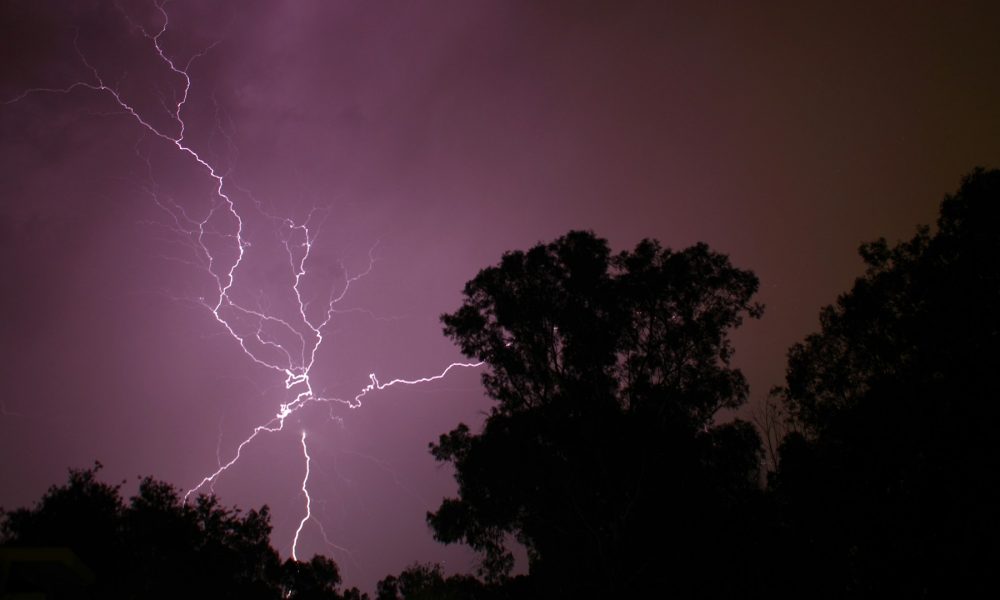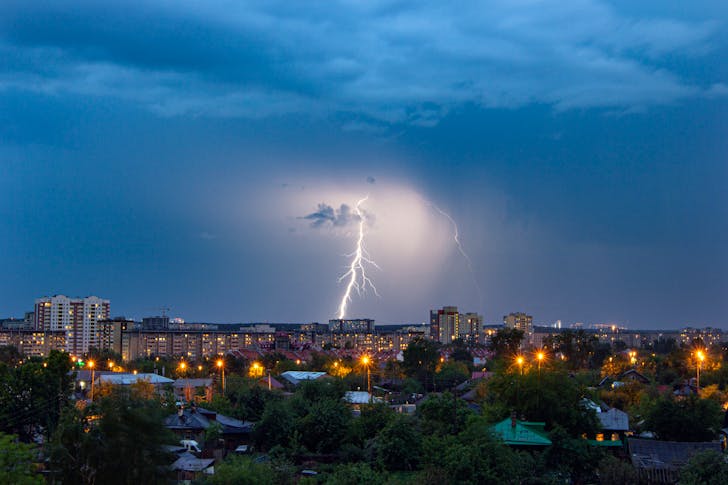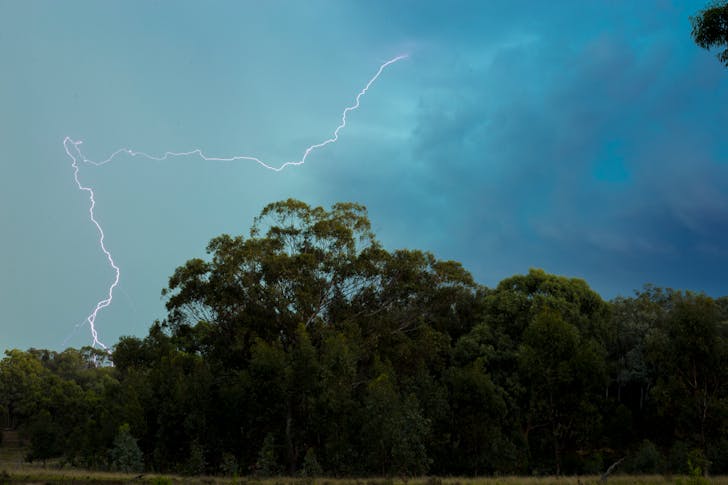
How Lightning Strikes Claim 320 Million Trees Annually

Lightning is striking down more than just power lines. Every year, it kills about 320 million trees worldwide, and that number is climbing. A recent study led by Andreas Krause from the Technical University of Munich lays it all out. Lightning is a much bigger player in forest damage and climate change than anyone thought.
However, this damage isn’t just about fallen trees. When trees get zapped and die, they start to rot, releasing huge amounts of carbon dioxide. The decay from lightning-struck trees lets out up to 1.09 billion tons of CO₂ each year.
That is not far off from what wildfires burn through when they torch living forests. And this carbon doesn’t just vanish. It goes right into the air we breathe.

Travel / Pexels / Lightning usually hits the tallest trees in the forest, the study says. It doesn’t always leave marks, but it kills them slowly from the inside.
That is part of why this problem stayed under the radar for so long. We are used to thinking about fire, logging, and pests. But lightning? It is quiet, sneaky, and just as deadly.
The worst-hit areas are tropical forests like the Amazon and the Congo Basin. These regions see constant storms and have giant trees, perfect targets for lightning. When those trees die, whole layers of the forest can fall apart. Plants and animals that depend on them lose their homes.
Climate Change Is Supercharging Lightning
The bad news is that climate change is making lightning more common. For every degree Celsius the planet warms, lightning strikes go up by 10 to 12 percent. Warmer air holds more moisture, and that moisture fuels storms. More storms mean more bolts.
This is especially bad news for places like Canada, Russia, and the northern U.S., where forests haven’t had to deal with frequent lightning in the past. As these places heat up, they are getting slammed with more strikes. That means more dead trees, more carbon released, and more pressure on already stressed ecosystems.
The Carbon Problem No One Saw Coming
When trees die from lightning and start to break down, they don’t just quietly vanish. They give off carbon, and lots of it. The study shows that lightning-struck trees emit nearly as much CO₂ as wildfires. That is a massive, unexpected source of greenhouse gas.
This matters because trees are one of our best tools for pulling carbon out of the air. But if millions of them are dying each year from lightning, and then releasing carbon instead of storing it, the whole system starts to break down. What used to be a carbon sink becomes a carbon source.

Shiv / Pexels / One of the most surprising parts of the research is how hard it is to track lightning damage. Many trees hit by lightning don’t die right away.
They can look fine for weeks or even months, then suddenly collapse. That makes it tough to count the real losses, which means forest managers and scientists may be missing the scale of the problem.
This kind of “silent death” can also mess up biodiversity. Animals and smaller plants that rely on certain trees suddenly find those trees gone. Whole food chains can be thrown off balance. And since lightning often hits the biggest, oldest trees, the damage hits forests right at the top.
Most climate models don’t account for lightning-driven tree death, a major blind spot. Forest planning and climate predictions need to factor in this growing threat. Krause and his team say it is time to take lightning seriously, not just as a fire-starter but as a forest killer in its own right.
More inLifestyle
-
`
Here’s Why Psychedelic Healing Doesn’t Need Big Pharma
Community is the heart of real psychedelic healing. Not sterile clinics. Not white lab coats. And, of course, not a billion-dollar...
July 4, 2025 -
`
Visit Tongass National Forest, the World’s Largest Temperate Rainforest
Tongass National Forest is where wild meets massive. It is the largest temperate rainforest on Earth, spreading across a jaw-dropping 16.7...
June 26, 2025 -
`
Luxury Superyacht Foodie Documentary Set for Premiere in Autumn 2025
Superyacht Foodie is setting sail into uncharted waters with a bold new documentary. “Superyacht Foodie Adventures” premieres in autumn 2025 and...
June 19, 2025 -
`
5 Doable Ways of Preventing High Blood Pressure (Hypertension)
Hypertension is sneaky. It usually shows no symptoms until it has done real damage. That is what makes it dangerous. If...
June 12, 2025 -
`
Nevada High School Student Arrested for Bringing Gun to Campus
In Nevada, a 10th-grade student at Community High School was arrested on Thursday afternoon after allegedly bringing a gun onto school...
June 6, 2025 -
`
Retirement Can Wreak Havoc on Your Mental Health. Here’s The Fix
Retirement sounds like a dream: No more meetings, no more commutes, and finally, time to do whatever you want. But retirement...
May 29, 2025 -
`
5 Must-Visit Spots in Peru for a Real Food Adventure
A real food adventure starts the second you land in Peru. This place doesn’t just serve food. It tells stories through...
May 22, 2025 -
`
5 Things to Do When Your Neighbors Follow a Weird Lifestyle
Some people just have a different lifestyle. That is fine, until it is not. When your neighbor’s lifestyle crosses the line...
May 14, 2025 -
`
5 Reasons Why You Should Invest in Community-Based Programs Now
Community nonprofits are essential. In Connecticut, they are the backbone of care for thousands of people who depend on mental health...
May 8, 2025















You must be logged in to post a comment Login